 |
 |
 |
| |
Extended efficacy and safety of dolutegravir and darunavir containing regimens at week 96 in the international randomised clinical trial: D2EFT
|
| |
| |
AIDS 2024 July 20-26 Munich
N. Kumarasamy1, on behalf of D2EFT study group
Institutions
1Voluntary Health Services, Chennai Antiviral Research and Treatment (CART), Chennai, India
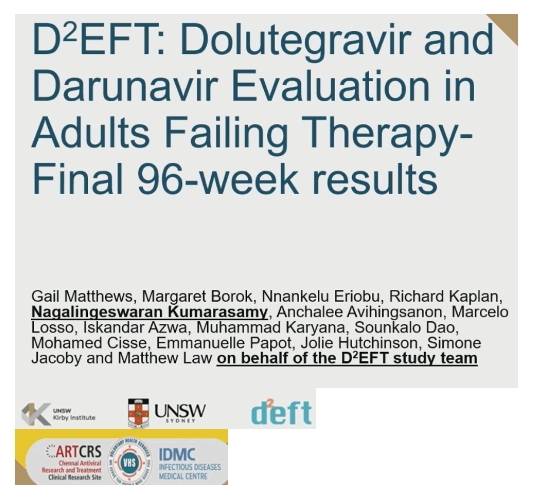

ABSTRACT
BACKGROUND: D2EFT is an international randomised trial comparing dolutegravir (DTG) with ritonavir boosted darunavir (DRV/r) versus DTG with fixed tenofovir and lamivudine or emtricitabine (TDF/XTC) versus standard of care (SOC:DRV/r+2NRTIs with a rotation of nucleosides or adaptation to HIV genotype) in adult people living with HIV-1 whose first-line NNRTI-based therapy has failed. At the 48-week primary endpoint both intervention arms demonstrated non-inferiority to SOC in terms of HIV-RNA<50 copies/mL with the DRV/r+DTG arm also showing superiority.
METHODS: Week 96 data are here presented as modified intent to treat analysis including all available data.
RESULTS: 826 participants from 14 resource-constrained countries were randomised: DTG+DRV/r (n=271), DTG+TDF/XTC (n=294), SOC:DRV/r+2NRTIs (n=261). Median age 39 years, 55% female and 69%, 25% and 2% of Black, Asian and White ethnicity respectively. Median CD4 was 206 cells/mm3 and median HIV-RNA was 15,400 copies/mL. Median BMI was 23 kg/m2.
By week 96 proportions remaining on original randomised regimen were 98%, 97% and 91% for DTG+DRV/r, DTG+TDF/XTC and DRV/r+2NRTIs respectively. At 96 weeks when compared to the SOC, the percentage with HIV-RNA<50 copies/mL was significantly higher for both DTG+DRV/r (85.6% vs 76.0%, [difference 9.6% (95% CI:2.7-16.4), p=0.01] and DTG+TDF/XTC (81.6 vs 72.6% [difference 9.0% (95%CI 1.4, 16.6), p=0.02). In a snapshot analysis in which response at week 96 was defined as remaining on randomised regimen and HIV-RNA <50 copies/mL, the proportions were 68.6% SOC, 77.9% DTG+DRV/r and 76.5% DTG+TDF/XTC (p<0.05 for both intervention arms against SOC).
Overall mean CD4 gain to week 48 was 156 cells/mm3 and by week 96 was 204 cells/mm3. At week 96 CD4 count gain was on average 53 cells greater in the DTG+DRV/r arm and 35 cells greater in the DTG+TDF/XTC arm compared to SOC (p<0.003 and 0.06 respectively).
Mean weight gain over 96 weeks was 4.1kg (SD7.2), 7.4kg (SD7.9) and 5.8kg (SD8.1) in SOC, DTG+DRV/r and DTG+TDF/XTC arms respectively. Trajectory of weight gain in DTG+TDF/XTC versus SOC plateaued after week 48 but continued in DTG+DRV/r.
CONCLUSIONS: Extended week 96 analysis in the D2EFT study confirms the efficacy and tolerability of DTG-containing regimens with both arms reaching superiority against DRV/r+2NRTI for virological suppression to <50 copies/mL.
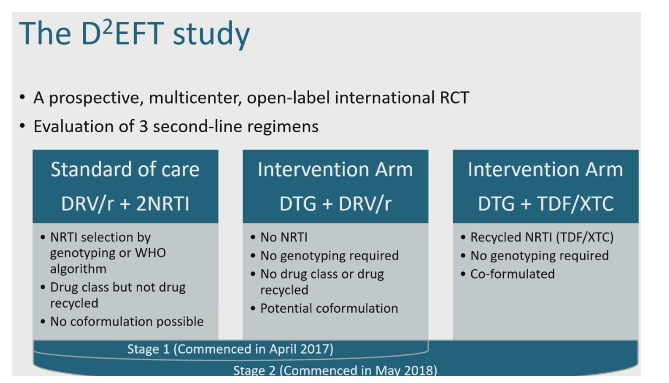
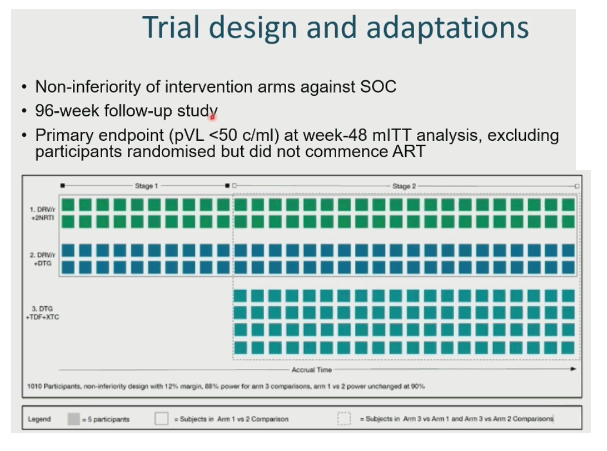

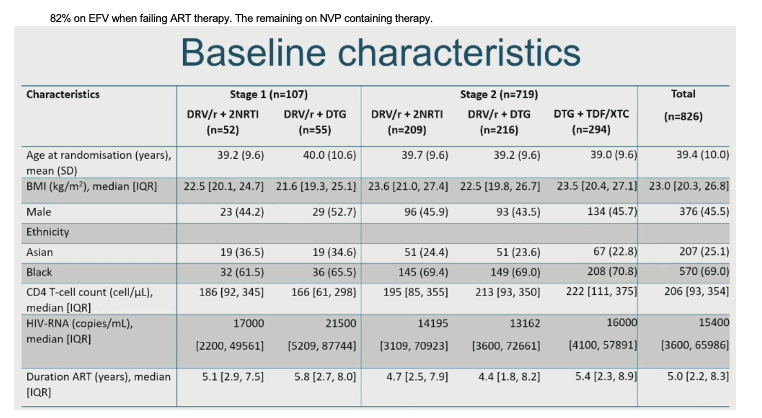
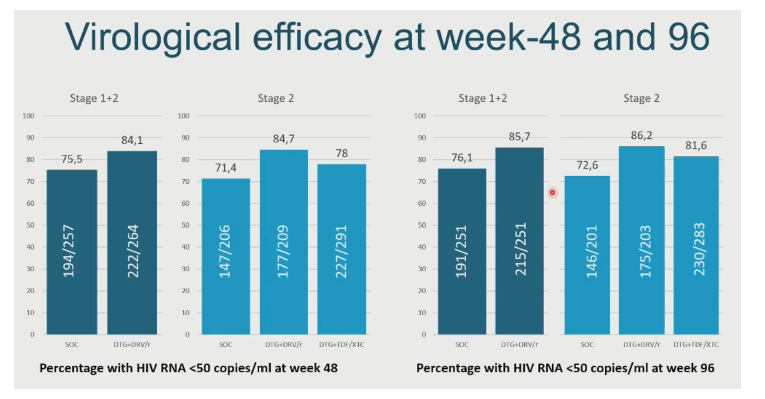
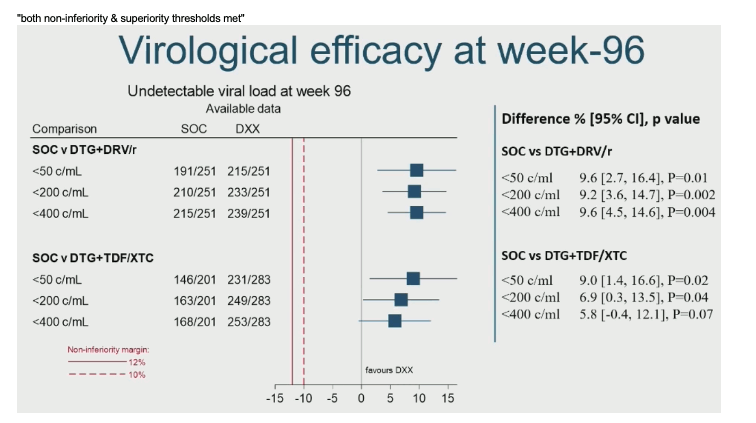
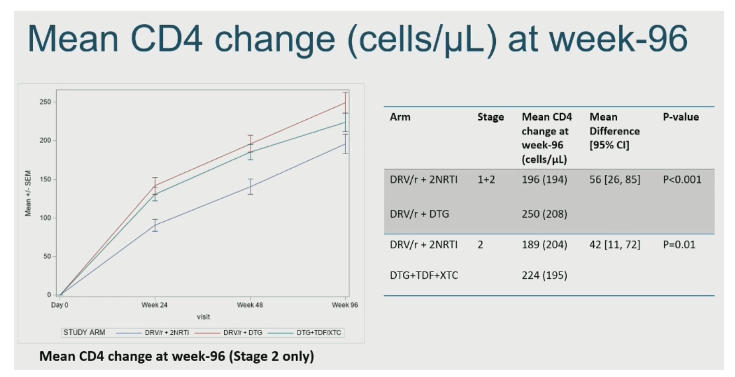
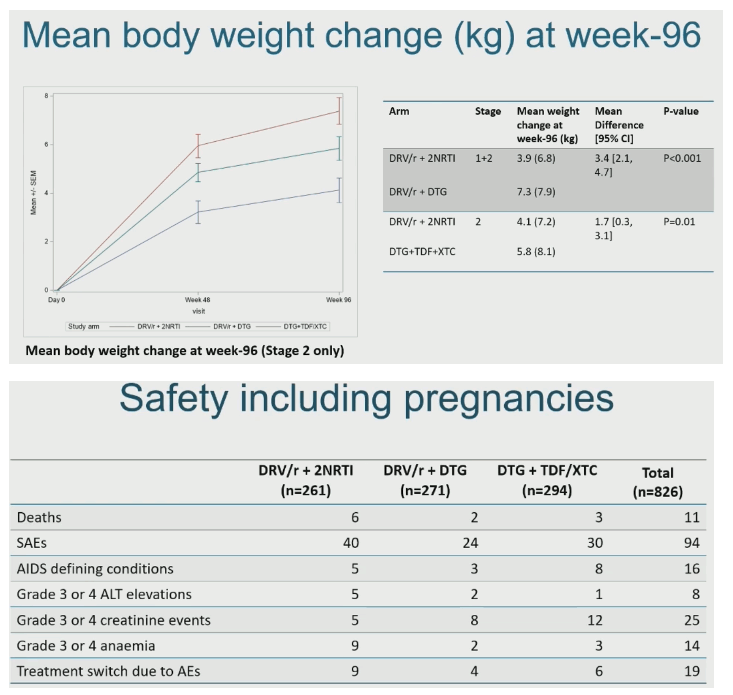
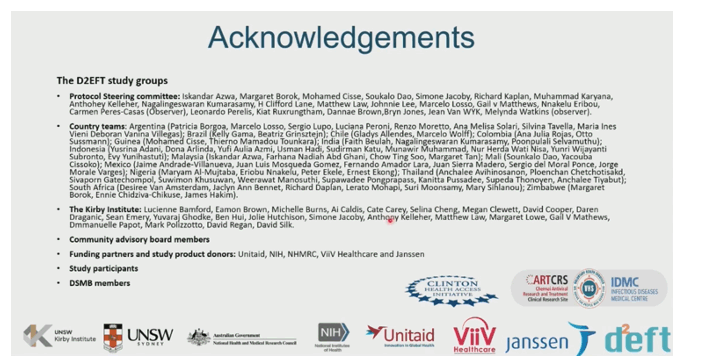
|
| |
|
 |
 |
|
|